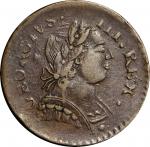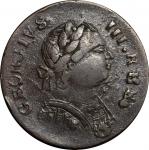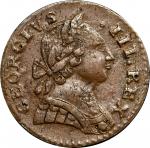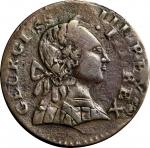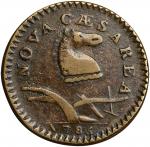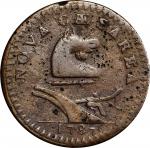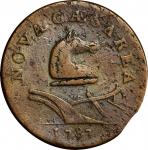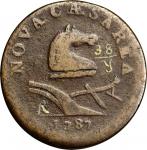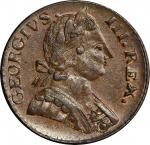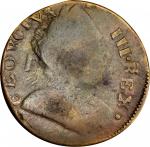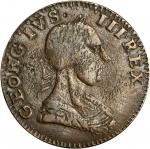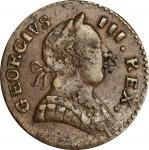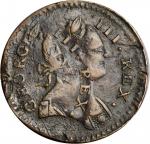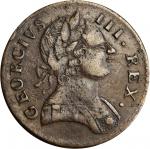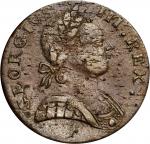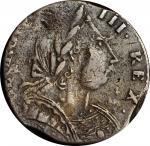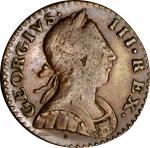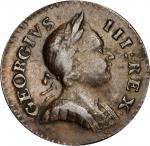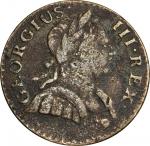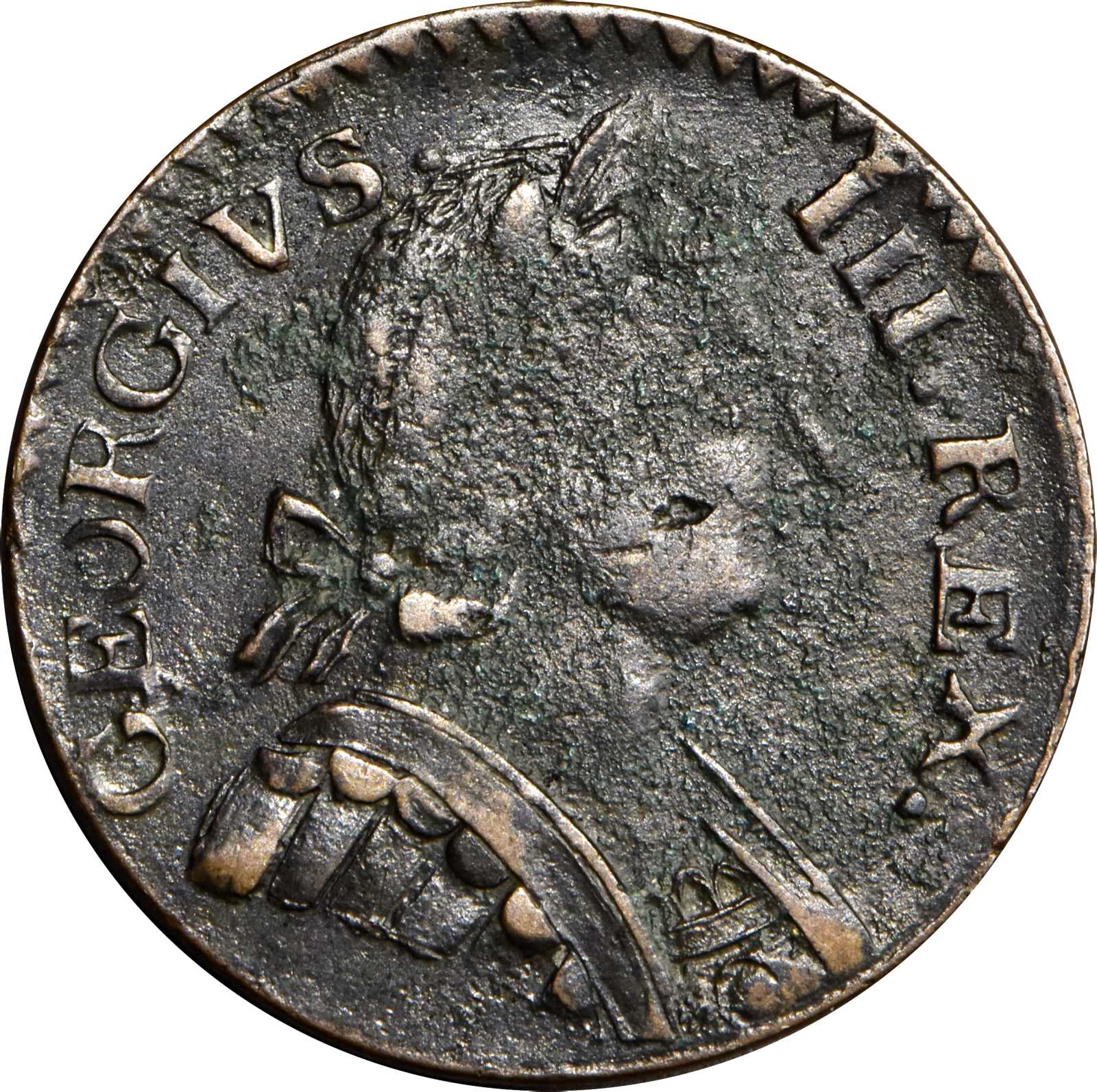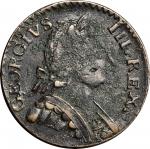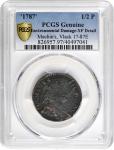1787 Machins Mills Halfpenny. Vlack 17-87E, W-7920. Rarity-7. GEORGIVS III, Group II. EF Details--Environmental Damage (PCGS).127.8 grains. One of the enduring rarities of the series, the 17-87E was discovered by David Sonderman in 1977 and published in the April 1978 issue of <em>Colonial Newsletter</em>, a few years after the 1974 publication of Vlacks second photographic plate. A second purported example was reported at the same time by Sonderman, but doesnt seem to exist, while in the July 1979 Colonial Newsletter, Jim Spilman published this example, then owned by William Anton, Jr., who reported to have had it in his collection for 12 years. A few additional specimens have come to light, bringing the count to only six pieces in 43 years, including a beautiful example in the Richard August Collection reported to be Mint State and plated in Dave Bowers <em>Whitman Encyclopedia</em>. Vlack 17-87Es rarity can easily be explained by the huge die break that starts as a thin crack at the rim between TA of BRITAN, extending into the field above Britannias left leg, where it is quite thick and deep, creating multiple planes to the die face. The die undoubtedly fell apart or become otherwise unusable due to the break and was taken out of service before too many additional strikes could be made. The cause of the massive break might have been a severe clashing of the dies, which transferred outlines of the mail from Georges bust into the field in front of Britannias face, seen only on the Sonderman specimen; all other known examples show the die clashing overly enthusiastically polished from the die face, which also effaced the majority of Britannias head, the N of BRITAN, much of the sprig and all of her left hand and forearm. Pre-clash strikes must have been very few, as none seem to have survived to the present day. This coin is very dark brown with lighter tan high points on the obverse, a slightly lighter brown on the reverse, the surfaces generally glossy and hard and somewhat granular. Much of Georges head, neck and right field is covered in a layer of fine, dark green verdigris, surrounding a perfectly smooth cheek with a depression in its middle. Where not covered in verdigris, the obverse is sharper than all other known specimens and would be more accurately described as AU from the standpoint of wear, while on the reverse the mounding caused by the die break has been obviously worn and is perhaps best described as About Extremely Fine. Only the sharp but also corroded Albany (i.e. Ringo) Collection coin has traded at auction, first in 2000 for $5,000, and then again in our (ANRs) Old Colony Sale in December 2005, where it brought $6,900. All other known examples have traded privately, with some having been off the market for several decades. Here is a very significant opportunity for advanced collectors looking to increase their variety count in the short Machins Mills halfpenny series.From the E Pluribus Unum Collection. Earlier from William Anton, Jr., who acquired it circa 1967.

